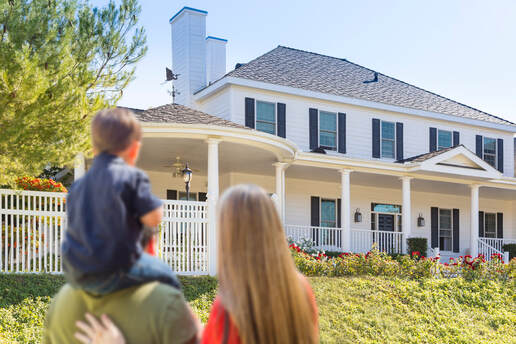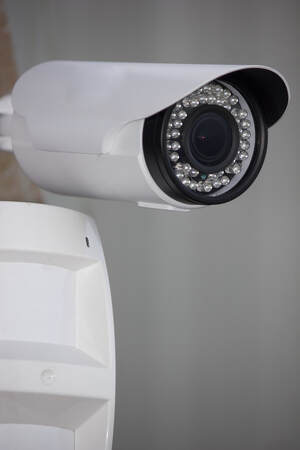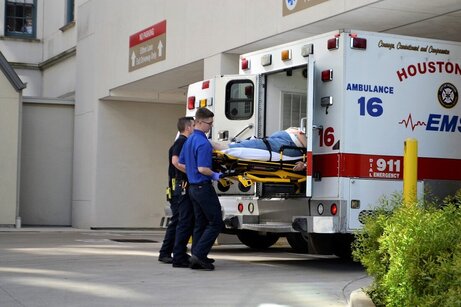|
Your house is supposed to be your private sanctuary, the one place in the world where you feel safe and secure. Accidents and injuries shouldn’t be a part of your home, but they almost always are. Poisoning, choking, falls, burns, fire, and suffocation are just some of the injuries that you and your loved ones may be exposed to. As such, it is vital to check on the safety and security of your home regularly. No matter how careful and organized you think you have been in maintaining your home, there’s always the possibility that potential hazards are lurking somewhere. Whether you have or do not have children, it’s crucial to ensure that every inch of your home is safe. Do the drawers and cabinets in the kitchen and bathroom have locks or safety latches? Keeping them locked will ensure that your children do not have easy access to sharp objects and medicine. (See Designing Cooking Kitchens - Practical Advice For Your Dream Kitchen Part 1 ) If the doors in the garage have been squeaking, did you ask a garage door repair specialist to check them? You wouldn’t want an accident happening in your garage, would you? These are just some examples of potential hazards in your house that you should pay attention to. These hazards are the reasons why you need to have a home safety checklist. What’s in a Home Safety Checklist? A home safety checklist is a document or list that you can use for finding hazards in your home so you can come up with a solution for avoiding them and preventing accidents and injuries. Using the checklist, you can make your home safer and more secure. Here are some things you might want to consider including in your home safety checklist. 1. Your house must be well-lit and can be seen from the road. Ensure that the house number is visible and legible. Your house must be easy to spot and easily seen from the road. It must be well-lit as well. In case of an emergency, responders will be able to find your place right away. Use reflective material for your house number so that it would be legible and difficult to miss. It will be easy to see even in the dark. 2. Install a video doorbell or sensor in addition to a regular burglar alarm. Of the more than one million burglaries in the United States reported in 2019, 63% were home break-ins. You will want to keep your home safe from thieves and unwanted guests. Installing a burglar alarm is good but if you want to be more secure, add a video doorbell or sensor so it will be easy for you to know who’s at the door. It’s an efficient additional line of defense. 3. Install carbon monoxide and smoke detectors. Carbon monoxide poisoning and fire are two of the most common causes of accidents and injuries at home. You should keep your family and yourself safe by installing a carbon monoxide detector and smoke alarm. These are devices designed to let you know when something is not right, like when danger is about to happen. Just be sure that your device is well-maintained – change batteries as often as possible and have it checked and repaired as needed. Most detectors are good for more or less ten years, so be sure to have yours replaced when necessary. 4. Install a fire extinguisher (if you still do not have one). If a smoke detector is crucial for alerting you and your loved ones of possible fire-related dangers, a fire extinguisher helps put out fires. However, you have to ensure that it is regularly maintained. Have it checked at least once a year, so you’re guaranteed that it is not expired and the safety pin is in place. 5. Have a fire escape plan ready. Even if you have a smoke detector and fire extinguisher, you still need to have an escape plan in case of an emergency. Everyone in the family, including the children, should know where to go when there is a fire. Have an emergency exit and plan your escape route. Practice your escape plan at least once a year. It’s a fun family activity and will help assure you that everyone is prepared if an emergency happens. (See Ensure the steps in your house are not a hazard or a nuisance) 6. Check for black mold everywhere in the house. Black mold in your home is not good. It doesn't only make your home look bad, but it also exposes you and your loved ones to health risks like allergies, wheezing, asthma, and other respiratory conditions. So, go around your home and look for signs of black mold. Mold is typically found in areas that are damp and cold. Where there’s water damage or leak, there could also be black mold. You’ll have to look for mold clusters or spots. You should also look under carpets and on ceiling tiles as mold is almost always hiding there. If you see black spots or a similar-looking stain in the carpet or ceiling, then you’ve got mold. You may not predict when an accident will happen, but you can always prepare and come up with the necessary precautions. You can make your house safer and more secure using the home safety checklist above.  Irene Trentham is the Content Marketing Strategist of Arizona's Best Garage Door and Repair Company, a locally-owned enterprise that specializes in garage door installation and repair for residents of Phoenix and surrounding areas. She loves to do camping, hiking and yoga and to spend time with her family and baby girl, Tatum when not writing Other Useful Articles: Is your home safe? Will Your New Home Be Fit To Live In Garages – more than a home for your cars Want to learn more about designing, renovating and building houses?Paul Netscher has written several easy to read books for owners, contractors, construction managers, construction supervisors and foremen. They cover all aspects of construction management and are filled with tips and insights.
Visit to read more. The books are available in paper and ebook from most online stores including Amazon.
1 Comment
24/8/2021 06:34:23 pm
I was searching over search engines about home maintenance and found your blog and it really helps. Thank you so much for giving us a detailed overview on home safety. Installing smoke alarms and carbon monoxide detectors is a great idea to save oneself and property from fire damage. Very valuable information. Keep up the great work.
Reply
Leave a Reply. |
AuthorI’m a construction professional, author of several successful construction management books, and a home owner. I’ve made mistakes in construction management, I’ve seen others make mistakes, but importantly I’ve had multiple successful construction projects and I’ve learned from the mistakes. I want to share these lessons and my knowledge with you. Also available from:
Amazon Au, Amazon DE, Amazon ES, Amazon CA, Amazon IT, Amazon FR, Amazon NL, Amazon India and 'An Introduction to Building Houses - Volume 2 Finding Your Ideal Property and Designing Your Dream Home'
Archives
July 2024
CategoriesWe welcome genuine comments, especially comments that add additional information to the subject matter in the article. We however reserve the right to remove inappropriate comments, which includes comments that have nothing to do with the subject, comments that include inappropriate language, and comments that are an advertisement for a product or company, or which include an advertising link. Comments must be in English. We will not enter into discussion on why a particular comment was removed.
|







 RSS Feed
RSS Feed


